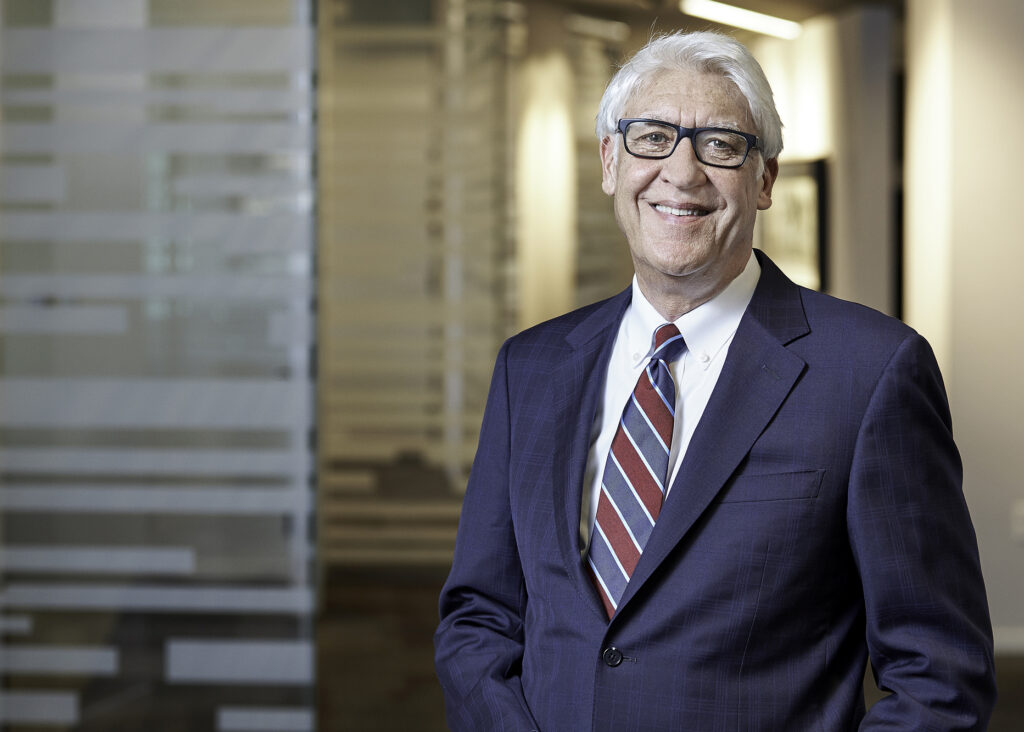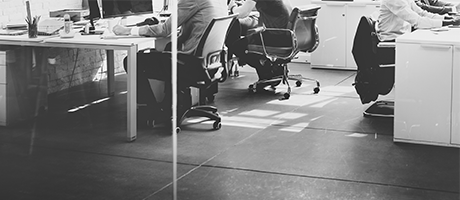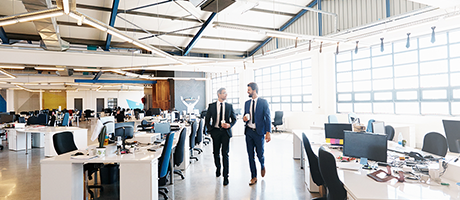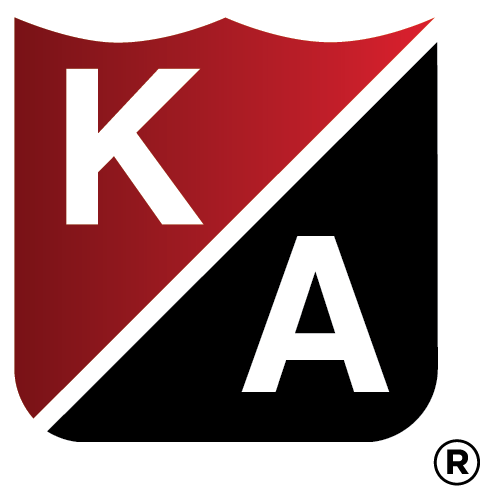By Brenden Nickels, Senior Office Assistant

The year 2022 is a special one for Kraus-Anderson. In addition to being the company’s 125th Anniversary, it’s also a milestone year for several KA branches and offices, including KA Insurance and the Bemidji office.
The Beginnings of Kraus-Anderson Insurance
In 1972, after decades of working in construction, Kraus-Anderson added a new line of service: Insurance.
Founder and former CEO, Lloyd Engelsma, did not like waste. Always keeping an eye out for ways to do things more efficiently and effectively, he quickly realized there was an opportunity to recoup costs and grow Kraus-Anderson’s presence by adding insurance services to the company’s portfolio.
Engelsma created the Insurance entity to improve risk management control and lower premium expenses.
After its inception, KA Insurance (KAI) created additional ways to help its clients deal with managing risk.
Adding to KAI’s List of Services
In 1991, KAI launched the Cost Containment Department, which specialized in Claims Management and Loss Prevention services. The department helps prevent employee injuries, but should they occur, helps manage claims more effectively. In 1993, KAI launched specialized units for Human Resources and Premiere Lines, a division designed to meet the needs of small businesses, as well as a unit specializing in Employee Benefits in 2000.
Because of an acquisition and expanded service offerings, in 2010, the former Cost Containment Department evolved into COMPTROL. It provides high-level claims management. Through a proprietary computer portal, clients gained 24/7 access to review any of the various analytics, claim status reports, or initiate certain activities. The safety department services grew into COMPTROL.zero, which focuses on preventing injury by offering safety training, inspections, writing or updating safety programs, and facilitating safety committees. This area works closely with many of KA Constructions’ sub-contractors, who are also clients of KAI.
In 2019, the various consulting practices combined under one umbrella known as Kraus Anderson Risk Innovation (KARI). KARI consultants provide guidance in different operational risks, like succession and strategic planning, project modeling, and data analytics— further supporting more informed decision-making.
Dennis Diessner, influential in the agency’s innovative growth, started working at Kraus-Anderson in 1983 and started leading KAI in 1992. I sat down with Dennis to discuss KAI’s past 50 years, as well as its future.
You joined the KAI agency in 1992. How has your role evolved?
When I started at the agency, there were roughly a dozen employees. Essentially, our clients were KA and a group of subcontractors. I wanted to grow everything— our clients, our companies, and our services. The agency developed construction expertise, so we built on what we knew and expanded into the insurance of large property portfolios and real estate developers.
My role from the very start was to grow the agency. Lloyd’s words to me were, “Denny, why don’t you take the Insurance Agency and see what you can do with it?” I’ve never looked back. Today, I see my role as more of a mentor or guide— letting the next generation of leaders find their entrepreneurial spirit as we continue to build our agency’s client base and services.
Now, you work alongside your son, Jon. Tell us about your working dynamic.
Jon started at KA Realty and then joined the agency about twelve years ago. He was interested in sales, so he started in our call center. He liked the business. I, of course, hoped the kids would show interest in the business, but Barb and I wanted it to be their choice. We didn’t want to make them feel like it was an obligation. It needed to be their decision, a right fit for them and the company.
I look back at my role as setting up a unique platform. Jon helped organize that platform in a sophisticated way, and we’re in a great position to grow the agency. One day, Jon can take that over. He has his hands on the operation, and I serve more as a consultant.
Jon brings an analytical approach to risk, whereas I brought an entrepreneurial approach. We came into leadership positions at different stages of the agency’s growth. Jon makes sense of my entrepreneurial story. We balance each other out nicely.
What’s working with your son like?
It’s been a dream! It brings us closer together. Going through hard-fought wins and losses bonds you. I have a huge sense of pride in the work that we get to do together. He’s earned the respect and the trust of our people and our leadership. Seeing his appreciation for our group’s talent makes me so proud. He makes a great leader, one who truly cares about the people.
How has KAI stayed competitive in the past, and how do you stay competitive today?
It always comes down to our clients. In any decision we make, our question is, “What’s best for the client?” Our clients’ needs drive us to stay competitive.
We have a long-term strategy that keeps our focus on the future, as well as a roadmap that will get us there. The strategy grounds us in our values and our goals.
Intellectual capital is another one of my tag lines. I spent 40 years acting as a talent scout, trying to find highly talented people to join us on our mission. Providing an organization that promotes learning and allows individuals to move up a scale is important.
Our sales approach also keeps us competitive. It’s fairly simple when you boil it down— We listen. We listen to our clients’ or potential clients’ needs and let them identify where the gaps are. We then fill in those gaps or help educate on a better option. If you listen, you’ll learn far more than if you try to sell yourself or your business services. Remaining interested and open to learning sets us up for success.
How does KAI fit into the whole of KA’s Family of Companies?
We are an important part of KA’s overall risk management team. At first, we operated more as an outside vendor, mainly performing the function of providing a competitive insurance policy. Today, we work together as a risk management partner with Kraus-Anderson as a whole.
Because we work so closely with KA Construction and Realty, we’ve learned a lot about the risks associated with those businesses, making us a better agency. They, too, gained insight into risk management from us. We’re providing value to each other.
Let’s discuss KAI’s acquisitions. How do you determine if an acquisition is going to be the right fit?
Understanding the culture is important. If the culture doesn’t match, we don’t proceed. We spend a long time on that. Everyone can say wonderful things, but you have to do your research and spend time looking into the culture of another company before you acquire it. Culture eats strategy any day.
We have done five acquisitions in our history. Each one has been unique. My first step is to determine if ‘1+1=3.’ Can we create something greater than the sum of its parts? When we leverage the proper points together, great things can happen.
Innovative technology plays a large role in your services. Talk about it. How do your clients respond?
We are very focused on technology and consider ourselves forward-thinking in that area. We work closely with our clients to help them, maybe push them a little, to try some new ways of doing things, and understand the process benefits and ways in which it makes their lives easier.
Cyber Insurance is something we got involved with when it first became available, and continue to have a large book of this business, as well as a dedicated practice leader. Cyber Security is something we spend a lot of time training and thinking about with our clients.
That being said, there are things that technology can’t replace, like face-to-face meetings. However, technology can make our lives better when we remain focused on our clients and keep an open mind.
Why is it important for you to chase the next thing, take the risk, and jump into more future-oriented projects?
We have a long-term strategy. We’re looking long-term, and that’s where the future is.
Why is KAI a great place to work?
What makes KAI a great place to work is what makes KA, as a whole, a great place to work. Our core values make a big difference. The reason I look forward to coming back each day is the people. My work life holds many of my important relationships.
One of those important relationships is with Bruce Engelsma, [Kraus-Anderson’s CEO]. He has been my partner through all of this, and he has been nothing but supportive. Bruce is a results manager, which I try to be myself, and allows creativity. He never told me what to do. Rather, he told me what he hoped we would accomplish together. We can never take for granted Bruce’s importance. While he’s in the background, Bruce is an extremely important part of the agency!
Several years ago, we held an agency workshop with the goal of updating our mission statement. After hours of discussion and newsprint covering all over the windows, someone said, ‘I just want to come to work and make a difference.’ Our mission statement became: “Together, we make The difference.” Creating a workplace and culture where people know they’re providing value is important.
Is there any advice you would give, looking back on your career, and your career path as a whole?
Try it. Think outside the box. Don’t be afraid to try something because you’re scared of failure. Failure is how you grow!
If your idea doesn’t work, how do you deal with failure or rejection?
I think outside the box every day. It was, and is, my job. Failure is just part of the game. Nobody likes to fail, but it’s important that you’re willing to make a mistake. This company doesn’t punish anyone for making a mistake. If people are afraid to fail, they’ll never do anything innovative. They’ll sit at their desk and be safe. I can’t think of anything more boring than sitting in mediocrity, so strive for success and be willing to take a chance.
Looking back on KAI’s 50 years, what makes you the proudest?
When I first started at the agency, my vision really surrounded what I wanted the culture to look like— what people would work here. I wasn’t looking for hierarchy. I wanted mutual respect.
I’m most proud of where we are today. I’m very happy with our progress. We’re in a really good place with really good people. I had a vision of what I thought we might be able to do. As I look back, we were able to achieve the goal, so that’s satisfying.



